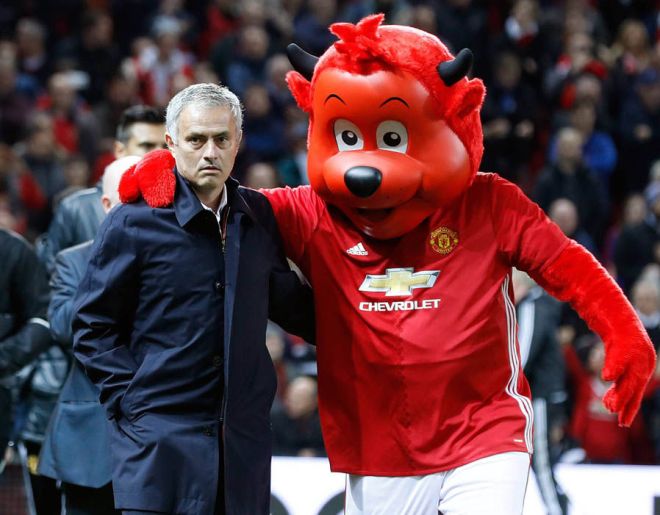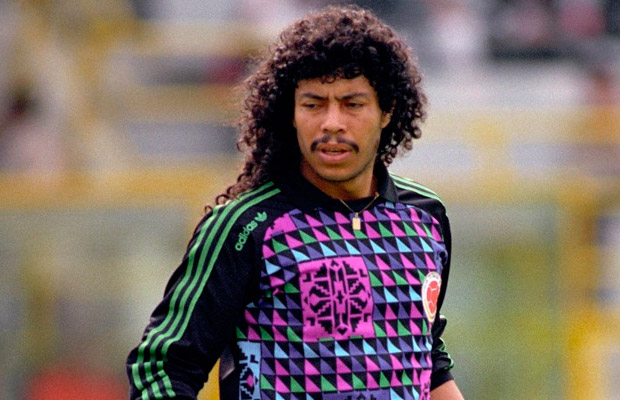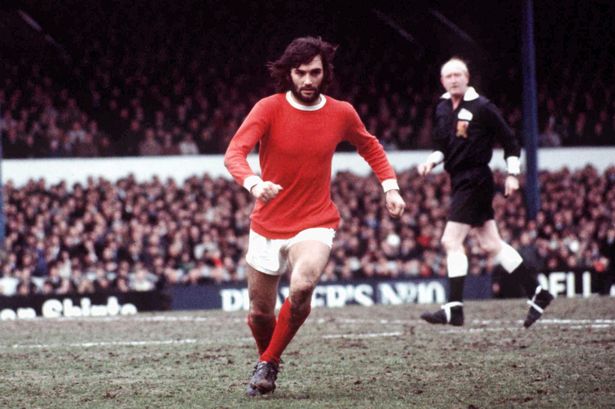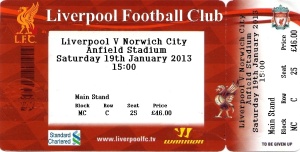Football Manager 2017 is hard. I’ve managed two teams so far – West Bromwich Albion and Marseille – and been sacked by both. It seems that, without constant attention to tactical minutiae, an iron-clad training regime and a telepathic understanding with your players, you’re on a hiding to nothing with Sports Interactive’s latest release. It’s just not like the good old days, when you could find a formation, settle on it and watch your players conquer all before them.
I wonder if José Mourinho feels the same about Premier League football at the moment? Manchester United currently sit 11 points off the top of the table and, unlike his predecessors David Moyes and Louis van Gaal, he cannot convincingly make a case that he has an ageing, declining squad or an unfinished project, decimated by injuries, at his disposal.
Mourinho spent £150m in the summer, including world-record signing Paul Pogba, yet United have failed to record a victory against any side higher than 10th in the league table, a shoddy record considering the season has just ticked into its most hectic month, December.
Optimists will have you believe that there are signs of the squad gelling, that it’s still early days, and that may be true – but results aren’t forthcoming, and United may already be out of a title race they looked dead certs to be key figures in as recently as early September.
In United’s last 10 games, they’ve won two, drawn five and lost three, scoring 12 and conceding 14. Over a full season, that’s not quite relegation form, but it certainly should be enough to cause concern – whether you take bad luck or inspired goalkeepers into account or not.
Has José taken on too big a job?

Confusion with team selection
The summer months may seem a long time ago now, but United won each of their first three league games. A large factor in this was a settled side. Between the opening game at Bournemouth and United’s third game of the season at Hull, Mourinho made just one change to his starting XI, bringing in Pogba – suspended for the Bournemouth game – in place of Ander Herrera for Southampton’s visit to Old Trafford.
Since then, Mourinho’s selection policy has been at best experimental and at worst baffling; the Portuguese admitted that starting an unfit Jesse Lingard and Henrikh Mkhitaryan in the Manchester City defeat was a mistake, but that experience seems to have affected José’s thinking, with United only fielding an unchanged side once since. While fielding Ashley Young to counter Liverpool’s wide threat at Anfield worked to an extent, starting a lethargic Pogba and Marouane Fellaini in defeats at Watford and Chelsea backfired spectacularly.
Mourinho’s poor league form has meant that he’s had to prioritise the cups, so even when United do find the correct formula – as in Thursday’s mauling over Feyenoord – he has to rotate to protect against fatigue three days later.
Arguments with players
Mkhitaryan is the most obvious victim of Mourinho’s erratic man management at Old Trafford so far, but the treatment of two of the club’s great young hopes has been – to fans – both needless and petty. Why do Luke Shaw – still only seven league games into his return from a year-long injury absence – and Anthony Martial bear the brunt of the blame for defensive mistakes and poor performances when Pogba and Zlatan Ibrahimovic, often lethargic and uninspired, continue to play every minute?
And what of the U-turn on Bastian Schweinsteiger? Whatever you think of the German and the likelihood of him ever getting a run of games for the club again, ask yourself this: did Sir Alex Ferguson ever renegade on a promise never to pick a player in a Manchester United squad again? Ask Jaap Stam, Roy Keane and Ruud van Nistelrooy, among others.
Whether he’s dropping Shaw and Martial, nailed-on members of the first XI in August, or recalling Schweini, you could make the case that Mourinho’s making it up as he goes along.
Relationship with the media
During his first spell at Chelsea, Mourinho was ‘the Special One’ – he could do no wrong in the eyes of journalists, unlike his arch-nemesis over at Liverpool, Rafa Benitez. Similarly, in his second spell after returning from Real Madrid, despite water in the form of an eye poke on Tito Vilanova having gone under the bridge, the press were still prepared to give Mourinho an ell. They lauded his title winners, despite them being arguably the most negative side to claim the league in the Premier League era, and defended his increasingly childish behaviour.
But all that has changed now (with the exception of Duncan Castles, of course). Whether that’s due to José now being associated with the most hated club in the land or not is up for discussion, but witness the atmosphere surrounding his recent sending off against West Ham for kicking a bottle. Jurgen Klopp, Mauricio Pochettino and, hell, even Louis van Gaal have shown similar passion and frustration on the touchline in the past and have been defended by the press pack, but there seemed to be widespread condemnation of Mourinho’s behaviour on Sunday. One thing is for certain: the Portuguese is no longer the media’s golden child.
Conclusion
I’m still behind Mourinho, and I still think that, given an upturn in attitude and the correct team selection, he can give himself the best chance of success at Old Trafford. As with van Gaal, the team has shown flashes of what it can do, most notably in home successes against Leicester, Feyenoord and Southampton. But there have also been some woeful performances. Chelsea was up there with some of the most spineless United performances I’ve witnessed in my lifetime, while Watford left me depressed for days. The opening third of the season has been poor for Mourinho, frustrating for fans and embarrassing for certain players, for the reasons outlined above. It might sound entitled, but United expect better.















